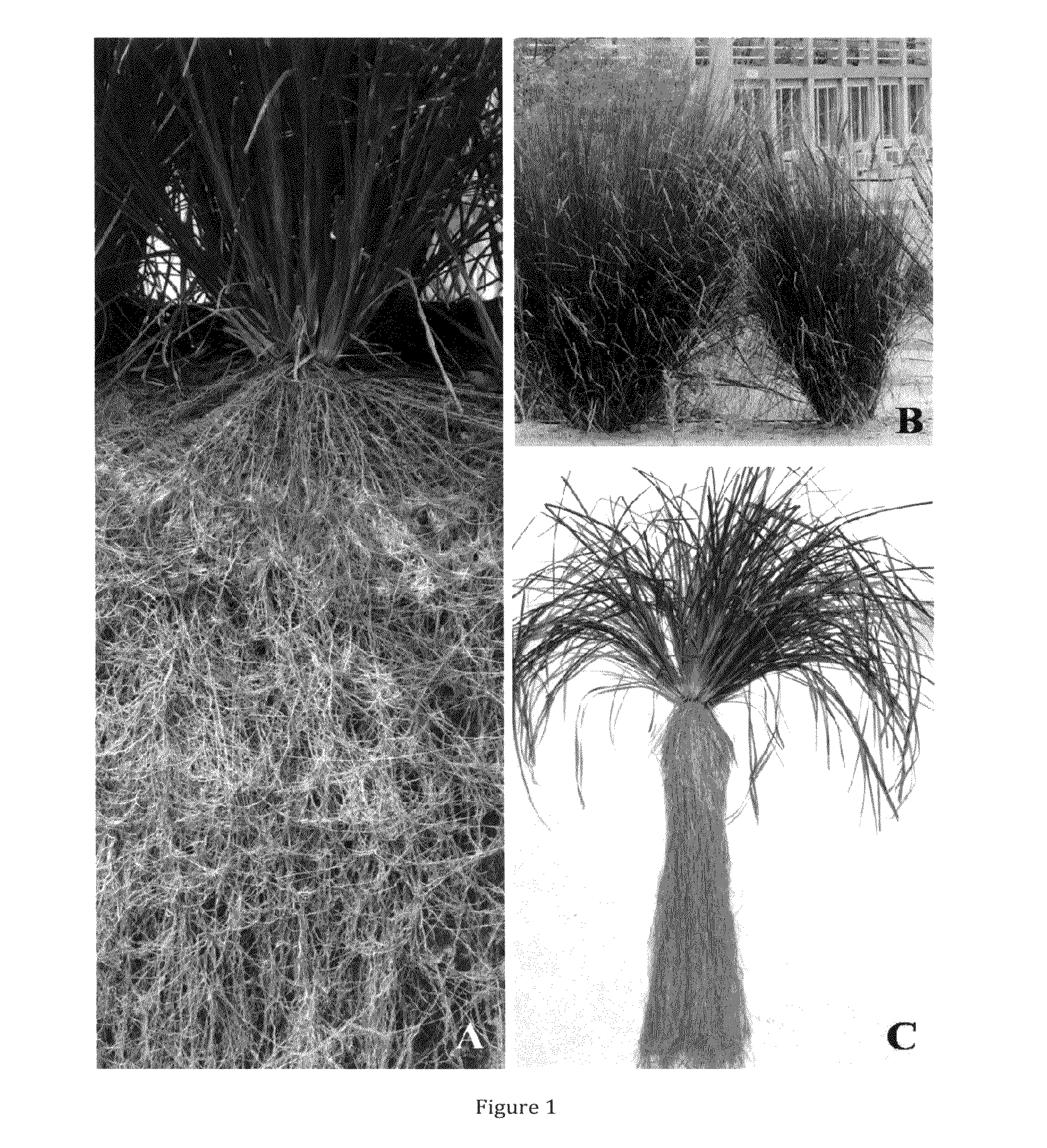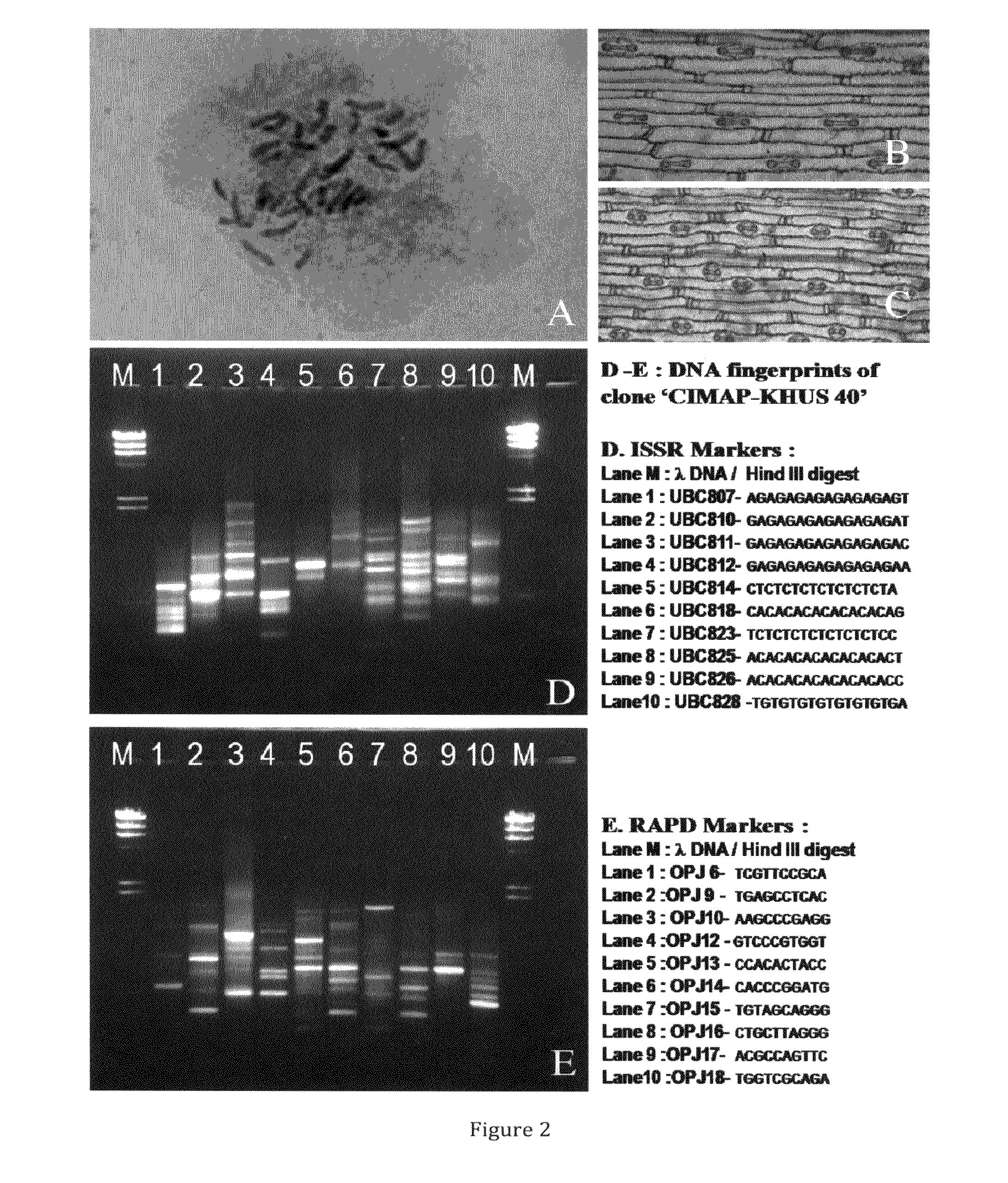Novel autotetraploid clone 'cimap-khus 40' of vetiver (vetiveria zizaniodes) useful for carbon sequestration and soil conservation
a technology of vetiver and autotetraploids, applied in the field of development and utility, can solve the problem that there is no true sense of non-seeding vetiver, and achieve the effect of convenient cultivation
- Summary
- Abstract
- Description
- Claims
- Application Information
AI Technical Summary
Benefits of technology
Problems solved by technology
Method used
Image
Examples
Embodiment Construction
Breeding History
[0011]Polyploidy is often accompanied by conspicuous changes in morphology and bio-efficiency consummated through increased cell size and enhanced cell surface related biological activities, but show reduced reproductive fitness owing to disturbances in meiotic behaviour. Polyploid plants often develop larger plant organs, and thus become ecologically and / or reproductively altered compared to their diploid progenitors. Polyploidy often causes disturbances in meiotic behaviour leading to imbalanced and sterile gametes thus limiting seed fertility. As such, polyploidy could be an important means to enhance biological potential of plants where plant biomass / body size is the target for improvement and seed production is dispensable. Therefore, artificial polyploidy is considered as an appropriate means to realise non-seeding / seed sterility / reduced seed set to mitigate the spread of target plants to undesired destinations through abiotic and biotic means of seed dispersal...
PUM
| Property | Measurement | Unit |
|---|---|---|
| root diameter | aaaaa | aaaaa |
| root diameter | aaaaa | aaaaa |
| area | aaaaa | aaaaa |
Abstract
Description
Claims
Application Information
 Login to View More
Login to View More - R&D
- Intellectual Property
- Life Sciences
- Materials
- Tech Scout
- Unparalleled Data Quality
- Higher Quality Content
- 60% Fewer Hallucinations
Browse by: Latest US Patents, China's latest patents, Technical Efficacy Thesaurus, Application Domain, Technology Topic, Popular Technical Reports.
© 2025 PatSnap. All rights reserved.Legal|Privacy policy|Modern Slavery Act Transparency Statement|Sitemap|About US| Contact US: help@patsnap.com



